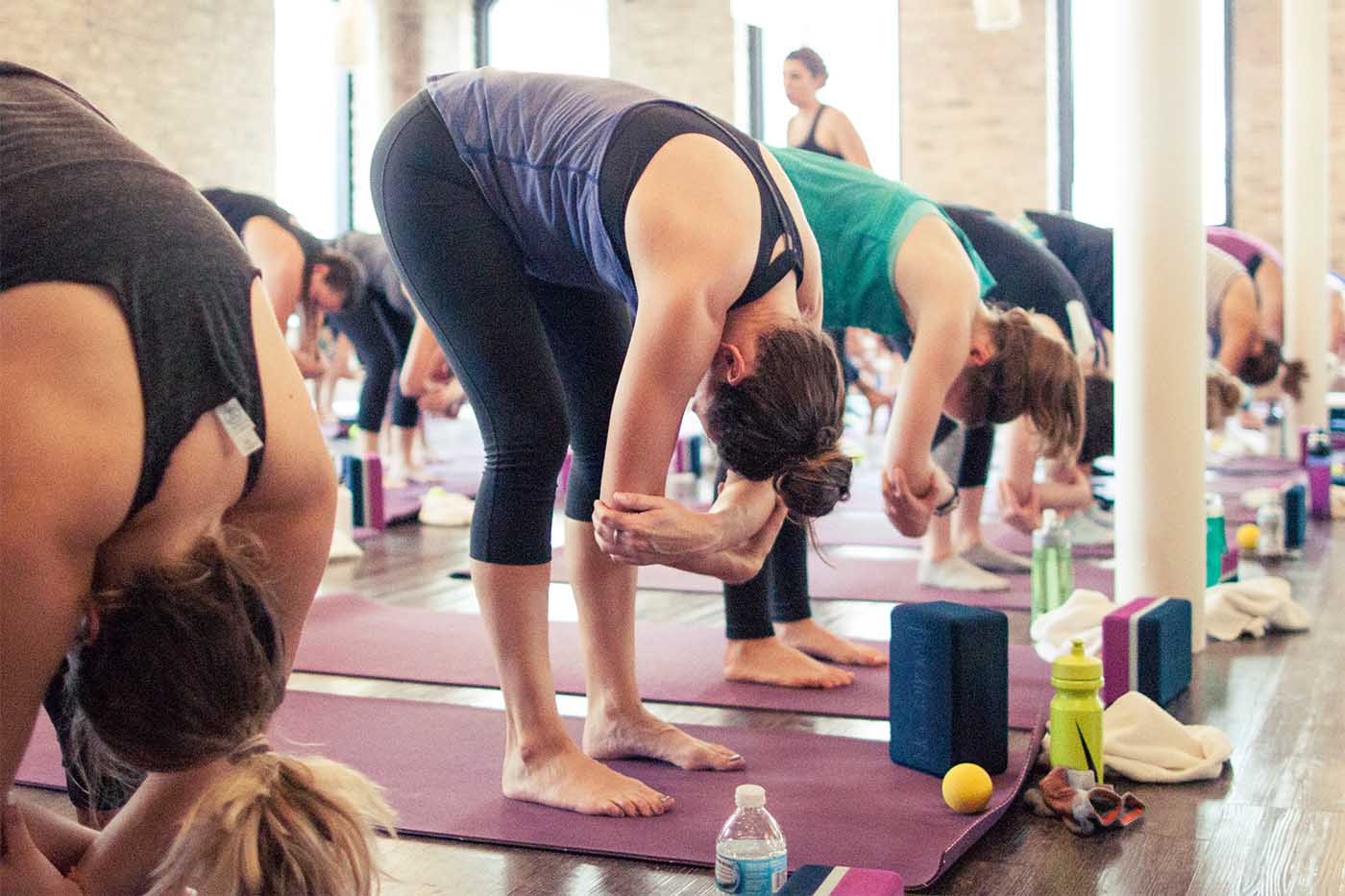Workout Obsessed: When to Say Enough’s Enough
During the few weeks between jobs this summer, I took a staycation. By that I mean I was subbing classes left and right, teaching morning and night and working out before or after those classes in multiple gyms all over Chicago. I was riding my bike to and from the gym and I was loving it; I honestly felt on top of the world.
I started to feel a slight twinge in my right shoulder that gave me pause during a crazy workout like a 9-minute EMOM of snatches or an AMRAP full of pull-ups that was followed by a yoga class (or two). But I’d just roll my shoulder around a few times and shake it off. I did this day after day, pushing my body to the limits, one workout after another, for weeks on end.
I got so used to the idea we’re all supportive of – the idea to push past what you thought you could do, to be better, to go harder and get stronger – that I didn’t think twice about saying “Yes” to putting so much physical stress on my body.
It wasn’t until I was demoing a high pull in class and felt a sharp pain that brought tears to my eyes that I finally acknowledged something was really wrong.
I didn’t know it then, but my journey to regain mobility and upper body strength would turn into an exploration and genuine curiosity to understand our motivations to work out the way we do and refuse recovery until an injury is staring us in the face. My shoulder was what wasn’t working, but I learned my mentality about working out was actually the thing I needed to fix if I was going to make any progress in my overall health.
By no means is this a recommendation for everyone to receive treatment. What I found most valuable about my treatment, however, was that my “forced downtime” helped me realize a few things about my own exercise habits. I offer them up to you in the case that my experience might resonate with you on some level and we share a common desire to become more educated and empowered to achieve our healthiest selves.
Listening to your body doesn’t mean you’re being lazy.
I’m not ashamed to admit that I have trouble deciphering between the two. It’s not an easy thing to answer for yourself, especially in the moment. But when I was foam rolling or practicing my push-up plus actions instead of joining friends in a HIIT workout, I knew I wasn’t being lazy. Forcing myself to break down basic movements – and truthfully, having someone there to keep me accountable for really sticking to those breakdowns – opened my eyes to how much work I have to do to regain mobility and perform certain exercises more effectively.
Developing body awareness when you’re not going balls to the wall in a workout helps you realize when you’re starting to fatigue during the workout, so your body knows better when to modify or pause. Powering through even when form goes out the window isn’t something you do if you’re weak, it’s something you do if you’re smart and you want to play the long game in fitness.
A quick fix won’t solve the root problem.
I’ve taken a few days off from handstands in yoga before when my shoulder started bothering me in the early months. And that worked, temporarily. But there was a reason why it started bothering me in the first place. If you don’t take the time to dig into what the root cause is and work to correct those inefficiencies or compensations, it will most likely continue to happen.
Learning your weaknesses is a valuable step in your journey to become stronger.
I had no idea what some of my muscular imbalances were until I opened myself up to possibility that I might not already have all the answers.
Once you know what you need to work on, though, you can tailor your workouts to strengthen what’s weak, and you can be more mindful of how you got there so you don’t continue old habits.
Doing things the right way doesn’t come naturally.
As valuable as it is to recognize when you need help, actually helping yourself involves two difficult processes: breaking old habits and forming new ones. Muscle memory is a powerful thing. When you’re working out, you already have to think about a lot – so when a muscle can take a shortcut and do what it already knows how to do and move the way its used to, that’s the default action you’ll take. Part of the healing process is breaking that habit and telling your brain to focus on something different to perform new actions and build new muscle memory. Now when I’m in the middle of a workout or when I’m stretching and foam rolling, I’m constantly re-learning things about my body.
Changing my schedule and my routine to incorporate more rest is an additional challenge. It’s freaking hard to dedicate 30 minutes a day to foam rolling. And I am by no means doing it, but at least now I’m aiming to fit it in outside of workouts, not just as a quick five-minute finisher once a workout is over.
I’m lucky.
Our bodies are incredible. When I catch myself thinking negative thoughts about how fast I can or can’t run or how many pull-ups I can or can’t do, I have to check myself. Getting up everyday is a gift, and my body is an incredible machine that can do many amazing things. Recovering, refueling and practicing self-love is the least I can do to give back to it after all that it does for me.













